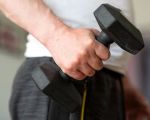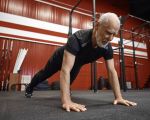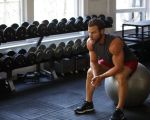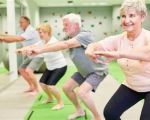- why-runners-need-gym-training-to-boost-marathon-performance
- key-strength-training-components-in-a-gym-workout-plan-for-marathon-runners
- building-a-balanced-weekly-routine-that-complements-running
- real-world-success-stories-how-gym-training-transformed-runners
- training-smart-and-staying-injury-free-with-gym-workouts
- find-the-right-equipment-and-guidance-for-runner-training
1. Why Runners Need Gym Training to Boost Marathon Performance
Many long-distance runners believe pounding the pavement is the only way to prepare for a marathon. But research—and real-world results—prove that adding a gym workout plan for runners marathon can dramatically improve endurance, posture, and injury resistance. It’s not about bulking up; it’s about strengthening the muscles that support your stride.
Leg muscles, core stability, and joint alignment play pivotal roles over the course of 26.2 miles. A targeted strength training program helps correct imbalances, improves running economy, and even supports faster recovery post-run. Ignoring the gym might save time short-term, but it risks long-term stagnation—or worse, sidelining injuries.
2. Key Strength Training Components in a Gym Workout Plan for Marathon Runners
A well-structured gym workout plan tailored for runners includes three major pillars: strength training, mobility work, and neuromuscular coordination. Let’s break each down.
Lower Body Strength: Focus on compound lifts like squats, deadlifts, and lunges to build glutes, hamstrings, and quads. These muscles provide propulsion and shock absorption with each step. Adding resistance bands can help simulate the running motion and reinforce muscle activation.
Core Stability: Runners need a resilient core for balance and efficient posture. Planks, bird dogs, and cable chops target deep stabilizing muscles, reducing wobble and wasted energy.
Upper Body and Posterior Chain: Exercises like dumbbell rows, pull-ups, and kettlebell swings keep your shoulders upright and chest open—key for deep, unrestricted breathing.
It’s not about lifting heavy. It's about functional, consistent training aligned with running mechanics. Integrating these into your weekly plan can make you a more efficient and resilient runner.
3. Building a Balanced Weekly Routine That Complements Running
The challenge for marathoners is finding the sweet spot between running mileage and gym time. A smart gym workout plan for runners balances strength sessions with easy and intense run days, preventing overtraining and maximizing gains.
Here’s an example weekly rhythm:
Monday: Recovery run + mobility work
Tuesday: Gym session (focus on legs and core)
Wednesday: Tempo run
Thursday: Gym session (upper body + stability drills)
Friday: Rest or light yoga
Saturday: Long run
Sunday: Optional cross-training or light strength session
Remember, quality trumps quantity. Two solid gym sessions per week are usually enough for most runners aiming for a marathon. Recovery is just as important as the workout itself.
4. Real-World Success Stories: How Gym Training Transformed Runners
Professional distance runner Erin Dawson swore off strength training until she experienced recurring knee pain during her second marathon season. After reluctantly working with a strength coach, she added twice-weekly gym sessions. Her next race? A personal best—and pain-free recovery.
On Reddit’s r/running forum, user “MidnightStride” shared how their 3x/week gym plan transformed their approach. They didn’t just run faster—they ran stronger, avoided late-mile cramping, and shaved 18 minutes off their marathon time.
These stories show that even recreational runners benefit from gym integration. Consistency and smart programming matter more than fancy equipment or elite coaching.
5. Training Smart and Staying Injury-Free with Gym Workouts
Injury is the silent killer of marathon dreams. A strong body is a durable body. Proper gym work targets stabilizers and imbalances before they become problems. One key principle: progressive overload. Gradually increasing load prevents sudden strain and allows connective tissues to adapt.
Incorporate unilateral exercises like single-leg deadlifts and step-ups. These reveal and correct asymmetries that are hard to spot during running. Don’t forget your mobility—tight hips or weak ankles often cause chain reactions in stride efficiency.
Track your soreness levels and watch for signs of overuse. Gym workouts should energize, not exhaust. Always include warm-ups and cooldowns with foam rolling or dynamic stretches to reduce injury risk.
6. Find the Right Equipment and Guidance for Runner Training
To implement an effective gym workout plan for runners marathon training, the right tools matter. You don’t need a luxury gym, but you do need essentials: resistance bands, kettlebells, a squat rack, and access to stability balls or TRX straps can take your training to the next level.
If you’re not sure where to begin, we recommend visiting Fitness—a trusted resource for runners looking to enhance their training with the best strength gear and coaching services. Whether you need a portable setup for home or full gym access, Fitness offers reviews and curated product selections that suit every training style and budget.








